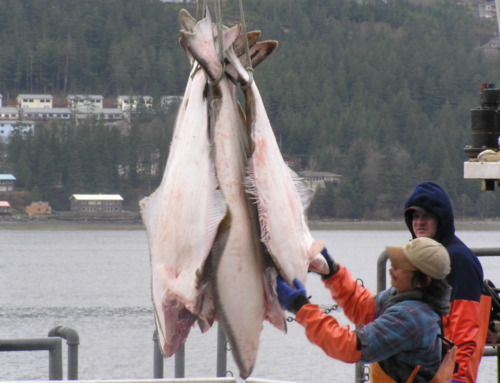It’s no secret: our bodies change as we age. In addition to physical and cognitive changes, many older adults will experience recurring nutrient deficiencies. The reason? A decreased ability to absorb certain vitamins and minerals.
The answer to these chronic nutrient deficiencies is simple: Add more of them to your diet. But, unfortunately, many seniors don’t have the ability to get certain types of groceries or produce, whether for financial or accessibility reasons. Luckily, there’s one type of food that meets most senior nutrition needs, often in triplicate. If you’re on this site, you probably already know the answer: Seafood.
Seafood, including fish, crustaceans, and mollusks, is a great diet addition to ensure you’re getting the nutrients you need to thrive as an older adult. Some types of seafood can have more than 100 percent of the daily recommended value for certain nutrients. We’ll break down which nutrients you’ll need to age healthily, as well as which seafoods are rich in which nutrients. Hopefully, this will help you make better, more informed dietary choices, which can help lead to a long, healthy life.
Essential Nutrients for Seniors
While most seniors will experience widespread nutrient deficiencies, some vitamins and minerals are more essential than others. Below, you’ll find some of the most common chronic deficiencies among older folks, as well as seafood options that can help address those deficiencies.
- Calcium and Vitamin D: These two nutrients are essential to bone health. As we age, we lose the ability to generate bone tissue fast enough to keep up with bone loss. Supplementing your diet with these nutrients can help slow bone degradation and the onset of conditions like osteopenia and osteoporosis. To get more calcium and vitamin D in your diet, eat: salmon, herring, canned tuna, cod liver oil.
- Vitamin B12: This vitamin is essential to maintain nerve and blood cell health. Unfortunately, our ability to absorb vitamin B 12 declines significantly as we age. Seniors tend to develop stomach issues, which can affect the enzymes needed to process and utilize vitamin B12. To get more vitamin B12 into your diet, eat: trout, salmon, canned tuna, clams.
- Potassium: Potassium can be a tricky nutrient for older adults. Some who experience a change in kidney function may find that their potassium levels are higher than normal; slower excretion of potassium can lead to its buildup. On the other hand, some seniors experience potassium deficiencies because of a faster electrolyte excretion through some medications, mineral imbalances, and excessive urination. If you’re in the latter group, the following seafoods can help raise your potassium levels: tuna, halibut, cod, trout, rockfish.
- Polyunsaturated and Monounsaturated Fats: While not a nutrient, these fats can help lower LDL cholesterol, also known as “bad” cholesterol. Keeping these levels low can lower your risk for heart disease and stroke. To help manage this and other cardiovascular issues, eat omega-3 and omega-6 fats. These can be found in the following seafood types: sardines, cod, mackerel, herring, trout, canned tuna, salmon, swordfish.
Simple Ways to Add Seafood to Your Diet
We know that seafood isn’t always the tastiest or most accessible option for some seniors. Some folks just don’t like it. We hear you, but we still want to acknowledge how essential seafood is to address senior nutrient deficiencies. If you’re not interested in buying and cooking a whole wild salmon fillet, consider any of the following ideas to slowly bring seafood into your diet.
- Consider canned options. Canned tuna and salmon can have just as much nutrient density as the fresh stuff. Importantly, these products have a very long shelf life and are often available at a fraction of the cost. They’re also low-maintenance and don’t require any additional cooking. If you’re looking for a healthy snack, just pop open a can of salmon and eat it on crackers.
- Check out the frozen food aisle. Frozen fish is often cheaper than what you’ll find at the seafood counter. Plus, these items can stay safe to eat when stored in your freezer, often for two to six months, depending on the type of fish you’ve purchased.
- Add seafood to your regular dishes. Eating seafood doesn’t always need to involve a hefty cut of meat. Mixing fish into other dishes, like pasta, salads, and casseroles, is a great way to integrate the nutrient-dense food into your diet. Plus, if you’re not a fan of seafood flavors, you can work other ingredients into the dish to help mask what you don’t like.
- Think beyond your three-meal day. When most of us think about seafood, we envision bagels and lox, seafood salad sandwiches, or a big hunk of fish meat for dinner. In reality, seafood can satisfy any meal or snack craving. If you don’t want to eat fish for one of your three meals, make it a snack instead.
With some creativity and a bit of patience, even the staunchest skeptics can learn to enjoy seafood’s nutritional benefits. Altering habits as a senior can be difficult, but with a change this delicious and nutritious, you’ll come to appreciate the occasional sardine or salmon fillet in no time.
Take note of our Affiliate Relationships that may exist with this page and companies listed on it.


